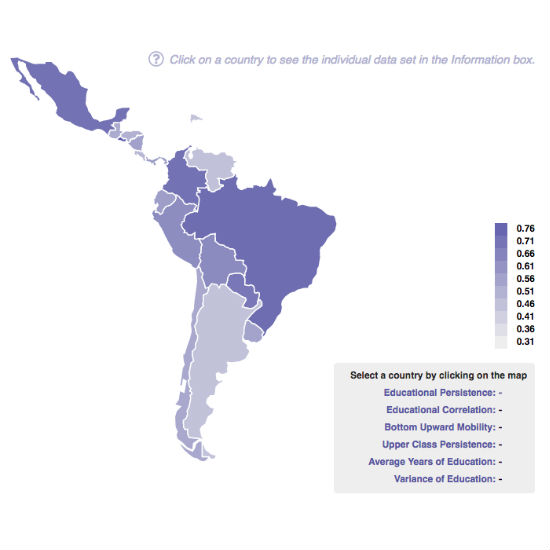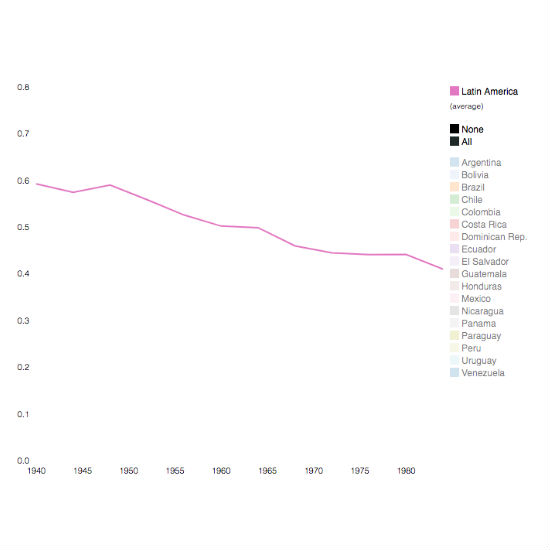How to use the site
This site shows the evolution of educational inequality and social intergenerational mobility in Latin America for people born between 1940 and 1987. Various indexes for these measures (displayed in the left panel) can be visualized in an interactive map or in interactive trend charts. Furthermore, the data can be downloaded to be used for your own analyses.



